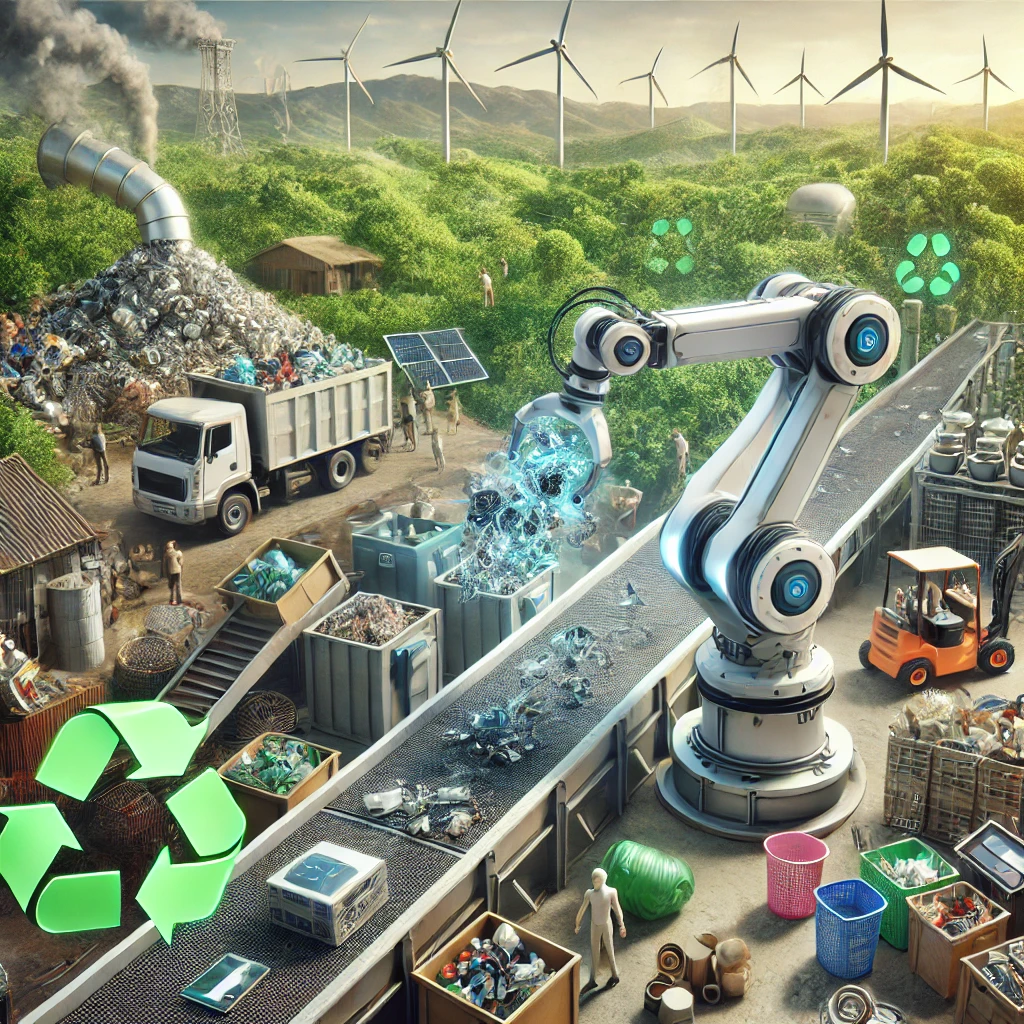AI pushes circular economy forward, but ethics trail
The study reports a sharp and consistent increase in publications on AI and sustainable economy topics since 2019, with the most productive years being 2022–2024. During this period, scientific output expanded from under 10 publications annually to nearly 40 by 2024, reflecting growing interest in AI applications such as smart waste management, energy efficiency, and green IoT technologies.

Artificial intelligence (AI) has emerged as a critical driver of sustainability, helping industries transition toward resource-efficient, circular economic models. But while innovation is surging, global academic research reveals critical disparities in impact, geographic concentration, and theoretical grounding.
A new study published in Sustainability, titled “Smart Innovation for a Circular Economy: A Systematic Review of Emerging Trends and the Future of AI in the Sustainable Economy”, offers a panoramic view of how AI is being applied to sustainability initiatives, particularly in the context of circular economy strategies. The research, conducted by scholars at Colombia’s Instituto Tecnológico Metropolitano, synthesizes 87 peer-reviewed articles indexed in Scopus and Web of Science between 2019 and mid-2025.
How is global research on AI and sustainability evolving?
The study reports a sharp and consistent increase in publications on AI and sustainable economy topics since 2019, with the most productive years being 2022–2024. During this period, scientific output expanded from under 10 publications annually to nearly 40 by 2024, reflecting growing interest in AI applications such as smart waste management, energy efficiency, and green IoT technologies.
Despite this momentum, the literature remains unevenly distributed. Italy leads global contributions, followed by India, Spain, the United Kingdom, and China. Other countries such as Canada, South Korea, the United Arab Emirates, and Finland have emerging outputs, while much of Latin America, Africa, and Southeast Asia remain underrepresented.
In terms of authorship and impact, the study identifies a divide between high-productivity researchers with limited citations and those with fewer publications but strong citation influence. Prominent among the latter are scholars like Bag, Gupta, Dwivedi, and Fraga-Lamas, whose work integrates institutional theory, circular economy models, and AI applications in manufacturing and logistics.
A similar divide exists among academic journals. Sustainability, Sensors, and the Journal of Cleaner Production have published the largest volume of articles, while titles like Technological Forecasting and Social Change deliver higher citation impact despite fewer publications. This suggests a fragmented yet rapidly maturing knowledge landscape.
What are the most promising areas of AI in the circular economy?
Keyword analysis and thematic clustering reveal that current research is coalescing around several major areas: smart cities, reverse logistics, life cycle assessment, nutrient recovery, and sustainable development goals (SDGs). Emerging concepts gaining traction include the “AI-based circular economy,” “AI-enabled energy policy,” and “agri 5.0,” reflecting integration across manufacturing, agriculture, and urban infrastructure.
Case studies cited in the most influential papers underscore the applied potential of AI. Examples include predictive analytics for demolition waste, automated sorting of municipal and medical waste, and blockchain-integrated AI systems for plastic recycling and cost control. These applications suggest AI can play a pivotal role in operationalizing sustainability, particularly in reducing industrial waste and optimizing resource use across sectors.
Still, the study warns that these advances are often concentrated in technologically advanced contexts. The underrepresentation of regions with limited digital infrastructure and regulatory capacity suggests that AI solutions risk reinforcing global inequality unless more inclusive research agendas are pursued.
The authors also highlight the absence of standardized metrics to measure AI's environmental and economic impact. This limitation restricts scalability and undermines trust in AI-based sustainability models. Additionally, the lack of universally accepted regulatory frameworks raises concerns over algorithmic fairness, energy consumption, and digital privacy.
What gaps must be addressed to align AI with sustainability goals?
One of the central contributions of the study is a detailed research gap matrix that identifies ten priority areas for future inquiry. These include the need for regulation tailored to AI’s role in sustainability, strategies to mitigate algorithmic bias, models for AI integration in small and medium-sized enterprises, and interdisciplinary methods that bridge environmental science and digital innovation.
Ethical risks also emerge as a serious concern, particularly in strategic sectors like agriculture and mining. In precision agriculture, AI may exclude indigenous and local knowledge, reinforcing digital divides. In mining, predictive AI systems may increase productivity but reduce employment, compounding vulnerabilities in already fragile communities. These examples underscore the need for socially sensitive AI systems that prioritize equity alongside efficiency.
The study advocates for transdisciplinary and international research collaborations, especially between the Global North and South. Such efforts could help ensure that AI-driven sustainability transitions do not exclude underrepresented regions. Promoting access to AI tools among small enterprises and enhancing local capacities through education and policy support are also deemed essential steps.
Methodologically, quantitative tools like machine learning and big data analytics need to be combined with qualitative frameworks that include stakeholder perceptions, policy analysis, and case studies. This hybrid approach would allow researchers to move beyond technological optimism and examine the social realities of AI adoption in sustainability projects, the study says.
Furthermore, it also urges the creation of regulatory mechanisms to ensure accountability and mitigate negative externalities. Without clear policies governing AI’s deployment in environmental contexts, the risks of extractive digital models, labor displacement, and energy-intensive computing may offset intended benefits.
- FIRST PUBLISHED IN:
- Devdiscourse










